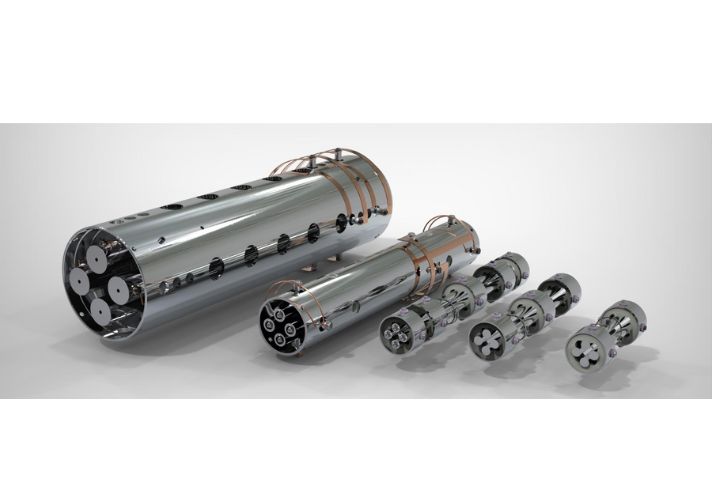The DLS-20 includes a unique, user switchable mode allowing the DLS-20 to be operated in both the first and second quadrupole stability regions, Zone I and Zone H. The stability region required is user selected in software. The benefit of operating in both zone I and zone H quadrupole stability regions with automatic switching in software is that this provides ultra-high resolution in the mass range to 20 amu, and very high resolution performance up to 200 amu. For example, this provides separation of the critical HD/3He peaks in zone H whilst in the same scan sequence analysing and acquiring data from other species with masses up to 200 amu using the conventional zone I stability region..
Other mass range configurations are available on request.
The quadrupole analyzer is a precision assembled triple mass filter combining 20 mm diameter quadrupole rods with unique, independently driven RF only secondary filter stages preceding and following the primary mass filter. A UHV low profile electron impact ioniser with twin oxide coated iridium filaments and a pulse ion counting single channel electron multiplier detector are included as standard. A Faraday detector option extends the dynamic range to 5 x 1010.
DLS-20 systems are directly controlled from a PC compatible computer via RS232, USB or Ethernet link, providing simultaneous data acquisition from multiple systems. The RC interface unit is a 90 mm high (2U),
19 inch rack mounting unit. It is mains powered and includes power on and filament status indicators. Windows® -MASsoft Professional PC software provides for fast data acquisition through either user configured acquisition files or pre-set modes selected by icon.
The Hiden DLS-20 system comprises
- Type RC2 control interface module for connection to the user’s PC, complete with connecting cables for the RF generator, head amplifier module and PC. A 19 inch rack mounting unit 2U high (3.5 inch, 88 mm), 237 mm deep.
- High-power RF generator with 0.9 m long RF cables for connection to the PIC analyzer. A freestanding unit 276 mm high, 438 mm wide and 274 mm deep.
- Head amplifier module mounting directly to the PIC analyzer, with integral pulse ion counting discriminator and cable interface.
- PIC analyzer including electron impact ioniser, triple
- stage quadrupole mass filter, pulse ion counting electron multiplier detector.
- Windows® MASsoft Professional PC software programmed for system operation. The system requires a PC for operation, not included in this item.
DLS-20 Features
- Unique dual zone switching mode: The resolving power of quadrupole zone H operation is available as a software selectable mode. The mode selection can be made for individual scans within an experiment, or in MID trend analysis with the stability zone selectable for each mass within the scan.
- Hiden’s high power electronics is now offered with selectable Zone H capability for masses up to 20 amu and zone I for masses up to 200 amu – in a single package.
- Low profile ion source. Desorbing surfaces may be positioned to within 8 mm of the ionization range.
- Fast data acquisition. Scan rates to 5 ms per amu.
- Mixed mode scanning. Trend Analysis, Histogram and Analog peaks in a multi-window display.
- Full user software control of Ion source for soft ionization and appearance potential mass spectrometry, for threshold ionization mass spectrometry (TIMS).
- TTL signal direct output for external use with multichannel scaler cards, for example.
- Gating input for pulsed gas studies with down to 1 µs gating resolution.
- Wide dynamic range. 7 decade continuous log scale, and up to 5 x 1010 with Faraday option.
- Automatic mass scale alignment.
- Data export facility to ASCII format and to all Windows® devices for printing/plotting.















Review DLS-20
There are no reviews yet.